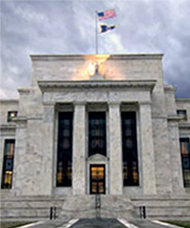A March 15th article in the Harvard Law School Forum on Corporate Governance and Financial Regulation “Key Points from 2015 Dodd-Frank Act Stress Test (DFAS)” brought up some interesting topics for conversation. It was authored by Dan Ryan, Leader of the Financial Services Advisory Practice at PricewaterhouseCoopers LLP, and is based on a PwC publication.
While all reporting banks passed the DFAST test, it was the Comprehensive Capital Analysis and Review (CCAR) that is seen as more important. Those results determine if a bank can return capital to shareholders. The US units of Deutsche and Santander were reported to have flunked the CCAR test. Goldman, JPMC, and Morgan Stanley were said to have been asked to re-do their plans to get Fed approval.
From the report footnotes:
“…The primary difference between DFAST and CCAR is that under CCAR the Fed assesses the quantitative impact of the bank’s capital plan and the quality of the bank’s capital planning processes. DFAST does not assess processes and assumes historical dividends, so DFAST can only be used to help anticipate CCAR’s quantitative results…”
Banks have a lot more capital now. Even on a stressed basis, banks look better now than they did pre-stress 2009. That is a big accomplishment.
“…More post-stress capital exists today than did pre-stress capital during the financial crisis: The 31 banks’ post-stress Tier 1 Common ratio (T1C) average 8.2% under the severely adverse scenario, which is higher than the same banks’ pre-stress T1C average of 5.5% at the beginning of 2009. Average pre-stress T1C is also up again this year from last year (11.9% versus 11.5%) as is post-stress T1C (8.2% versus 7.6%)…”
For the banks active in capital markets (read: those active in balance sheet intensive businesses like repo), the leverage ratio is issue #1.
“…Leverage ratio appears binding for many of the largest banks: The leverage ratio is the binding constraint for many large banks as they remain close to the 4% minimum. The leverage ratio is particularly punitive for banks with significant capital markets activities. However, as the proposed G-SIB capital surcharge comes into play, these banks will further increase their common…”
That last sentence was interesting. This sounds like for the handful of big banks that will have to hold G-SIB capital, the leverage ratio will (eventually) be less of a concern. But those banks will be focused on making sure the return on any business meets certain ROC hurdles. Figuring out those rules, much less applying them, will be more art than science. This will be the role of KVA desks. We wrote a little bit about that in our March 3rd post “As banks figure out how to allocate capital and liquidity expenses, the cost of clearing swaps is going a lot higher….”
We’ve heard that CCAR has been something of a moving target for the banks, making it difficult to satisfy the Fed. While CCAR should be an iterative and evolving process, it is hard to get in front if it keeps on changing. From the report, that seems to have calmed down:
“…Fed models seem to be maturing and becoming more predictable: For the first time, the Fed disclosed the degree to which its stress models have changed, indicating that there were only incremental changes to most models. This model stability (and the fact that the Fed’s economic scenarios have been held fairly constant over time) should allow banks to better anticipate the Fed’s projected capital losses in the future. Banks can integrate this information into their future capital distribution plans in order to maximize their distributions to shareholder without having to raise regulatory flags by taking the mulligan…”
But
“…DFAST (and CCAR) will likely be tougher in the future: The Fed indicated late last year that it may add all or a portion of the proposed G-SIB capital surcharge to post-stress capital ratios. Although we would not expect a proposed rule in this regard until at earliest the second half of this year, it is possible that such a rule could be finalized in time for DFAST 2016 given that stress testing deadlines will occur three months later…”
The regulators aren’t done holding the banks collective feet to the fire just yet.


